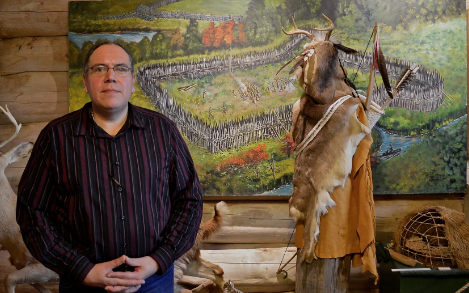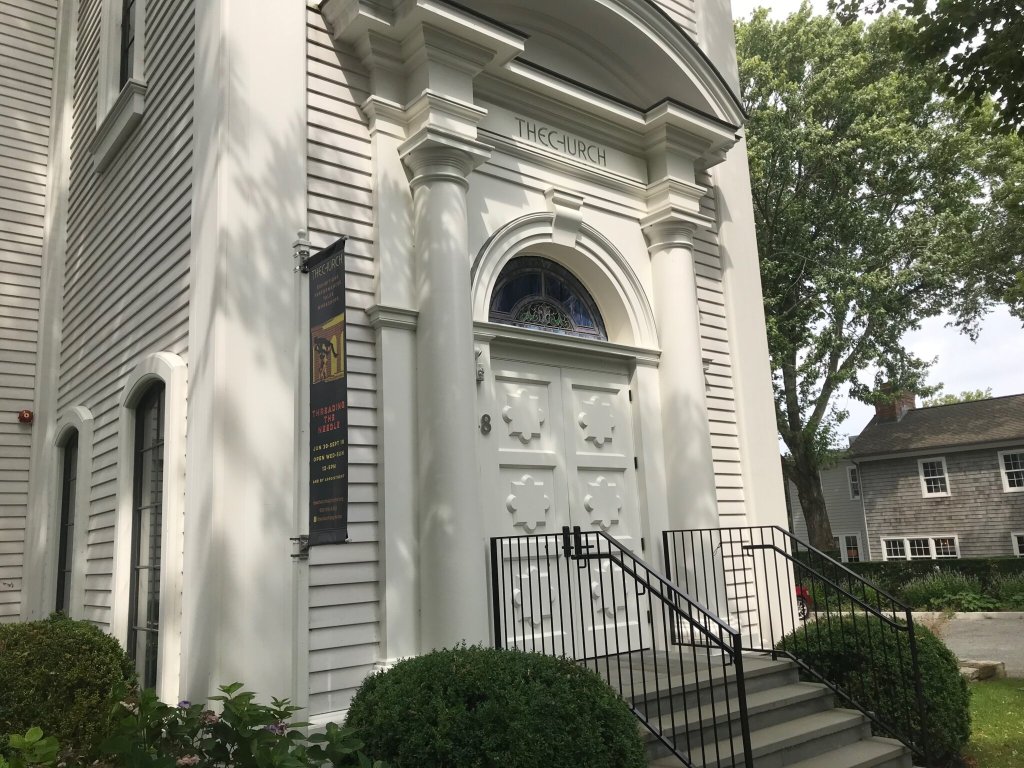It’s Spring at the Shinnecock Museum!

Although they recently held their Spring Open House, the Shinnecock Nation Cultural Center and Museum—“Long Island’s first Native American-owned and operated outdoor living culture attraction”—has been in existence since 2001, tracing its origin to a “grassroots cultural revitalization project” that started in the 60s.
The key word in their description may be “living” because the concept of preserving, understanding, appreciating and, most of all, continuing Native American tradition on the East End is what sets this cultural center apart, according to the museum’s director and curator David Bunn Martine. His oil paintings of ancestors adorn several walls. Indeed, history “lives” at the museum, though assistant curator and Wikun Village site manager Matauqus Tarrant prefers the term “cultural materials” to “artifacts” because the visual and performing arts here testify to the continuity of Shinnecock civilization. Native Americans, he points out, didn’t treat art as out-of-context pictures or decorative crafts but as symbolic and practical embodiments of “life skills.”
Although Martine trained at the Institute of American Indian Art in Santa Fe (it has one of the best collections and exhibition programs in the country), he is putting a clear Shinnecock stamp on this local center. Many museums display objects from archeological digs, he says, but for him, culture lives. Art, he says, echoing Tarrant, is authentic and integral to the sense of a wider culture, while crafts, often simple, are typically manufactured replicas. Art is broader than crafts: Andrea Godoy, the assistant director who lives on the reservation, notes with great enthusiasm that recent changes at the museum are in the direction of providing “a full immersion experience” for visitors, one that involves not just seeing what people were wearing and doing in the 17th and 18th century, for example, but in participating in workshops.
Present-tense exhibit titles such as “My Spirit Dances Forever” and “A Walk with the People” (murals painted by Martine) suggest the endurance of a culture that was all but eradicated from recorded American history following “contact,” which is how Native Americans refer to the arrival of Europeans on their shores. Roger Bloom, an attorney who serves on the museum’s Friends’ Committee, has stronger words to describe that fateful encounter and the importance of educating everyone about Native Americans. A fervent supporter of “survival communities” (he had relatives who were killed in The Holocaust), Bloom feels a moral imperative to promote efforts that would educate and redress. The Mashantucket Pequot, who operate Foxwoods Resort Casino, generously donated to the museum, in appreciation of the surreptitious Shinnecock aid offered to them when they fled the British in the 1700s. Tohanash Tarrant, Matauqus’ sister, noted in a previous interview how even some Shinnecock themselves are unaware of the extent and depth of their own presence in the area.
Of course Martine’s delighted that the center’s new, enhanced and still-expanding space offers even more. “There’s a lot more to traditional Native American art than people imagine,” highlighting particularly the “intricate details” of Shinnecock art. Although he and the staff are excited about the Memorial Day weekend debut of Wikun (the word means “good”) Gathering Place and Living History Village, where tribal members will lead nature tours and demonstrations of various activities (including cooking, hide tanning, gardening, tool making, building dugout canoes and wikiups), he is pleased, if a bit happy-tired from last minute preparations, that the beautiful white pine (“sacred wood”) log cabin (pegs, no nails) that houses the museum’s dedicated and multipurpose rooms is now a growing tourist destination. Indeed, a chance inquiry of Open House visitors turns up both locals and city folk. Bill Westerhoff, from Southampton, says he grew up with “a lot of the guys who live on the reservation.” A former “horticulturalist by trade,” he feels “connected” to the Shinnecock because “they are connected to the natural world.” Another visitor, an artist who works with arrowheads (“Oh, you can just call me one of the Smith Brothers”), came from Greenport because he particularly likes Martine’s large portraits and ceremonial oil paintings. A couple from North Sea (and Queens) were “delighted to have read about the opening in…what else…
Dan’s Papers.
shinnecockmuseum.com, 631-287-4923



